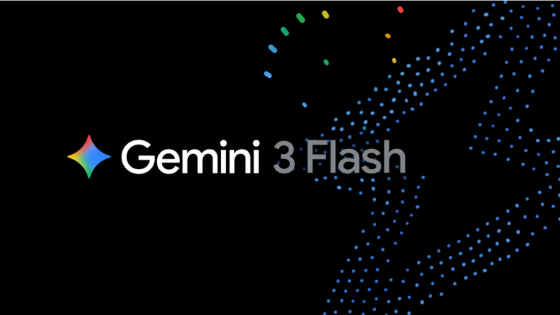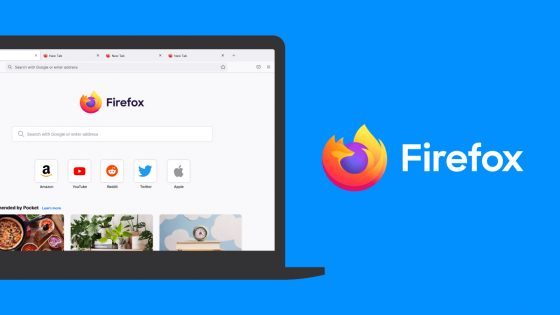All about the new artificial intelligence Microsoft 365 Copilot
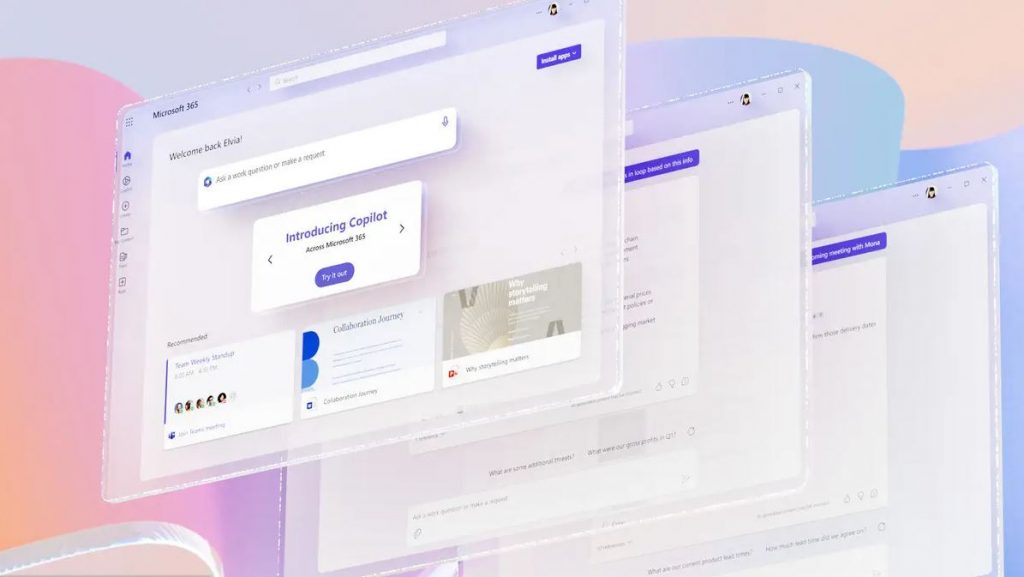
Earlier this year, Microsoft announced a collaboration with OpenAI, the creator of ChatGPT. The fruitful collaboration allowed them to rapidly integrate Copilot's generative artificial intelligence (AI) into Microsoft 365, its suite of business productivity and collaboration applications. This innovation combines Word, Outlook, Teams, Excel, PowerPoint and many other applications with artificial intelligence that can automate routine tasks and generate content, potentially saving users time and improving their productivity.
Copilot aims to simplify workflows — such as writing emails and designing slideshows — by automating tasks. When announcing the tool, Microsoft CEO Satya Nadella described it as “a key advancement in the evolution of our interface with computer systems… With the introduction of Work Copilot, we’ve expanded the ways people can work and make technology more accessible through the most widely used interface — natural language.”
With Microsoft 365 Copilot, Microsoft aims to create a “more useful, functional assistant” for work, said JP Gownder, vice president and principal analyst on Forrester’s Future of Work team. “The concept is that you are the ‘pilot,’ but the copilot is there to take over tasks, which can make life a lot easier.”
Nadella recently commented on the effectiveness of M365 Copilot, claiming that customers have seen an increase in productivity compared to that of GitHub Copilot (about 50 %), an AI assistant aimed at developers that was introduced two years ago.
What is Microsoft 365 Copilot?
The Microsoft 365 Copilot system consists of three elements:
- Microsoft 365 applications such as Word, Excel and Teams, where users interact with an AI assistant,
- Microsoft Graph, which includes files, documents and data in the Microsoft 365 environment,
- OpenAI language models that process user prompts: OpenAI's ChatGPT-3, ChatGPT-4, DALL-E, Codex, and Embeddings.
All of these models are hosted on Microsoft's Azure cloud environment.
Copilot is just one part of Microsoft's overall plan for generative artificial intelligence. There are plans for Copilot tailored to Microsoft's Dynamics 365 business applications, PowerPlatform, Enterprise Security Suite and Windows operating system. Microsoft's GitHub subsidiary also developed GitHub Copilot with OpenAI a few years ago, which basically provided an auto-completion tool for coders.
A key component of Copilot, as with other generative AI tools, is Large Language Models (LLM). These language models are best thought of as a machine learning network that is trained over sets of input/output data. The model uses self-supervised or semi-supervised learning methodology. Basically, the data is ingested and the LLM outputs a response based on what the algorithm predicts will be the next word. The data in LLM can be limited to the company's proprietary data or, as in the case of ChatGPT, it can include any data submitted directly from the web.
To help companies implement generative AI tools into their data, Microsoft has created a semantic index for Copilot, a “refined map of your personal and business data” and a “prerequisite” for Copilot adoption in an organization.
Using the index should provide more accurate searches of enterprise data, Microsoft said. For example: when a user requests "review of last quarter's earnings", the semantic index will not only look for documents that include those specific terms, but will also consider additional context, such as which employee typically produces these types of reports.

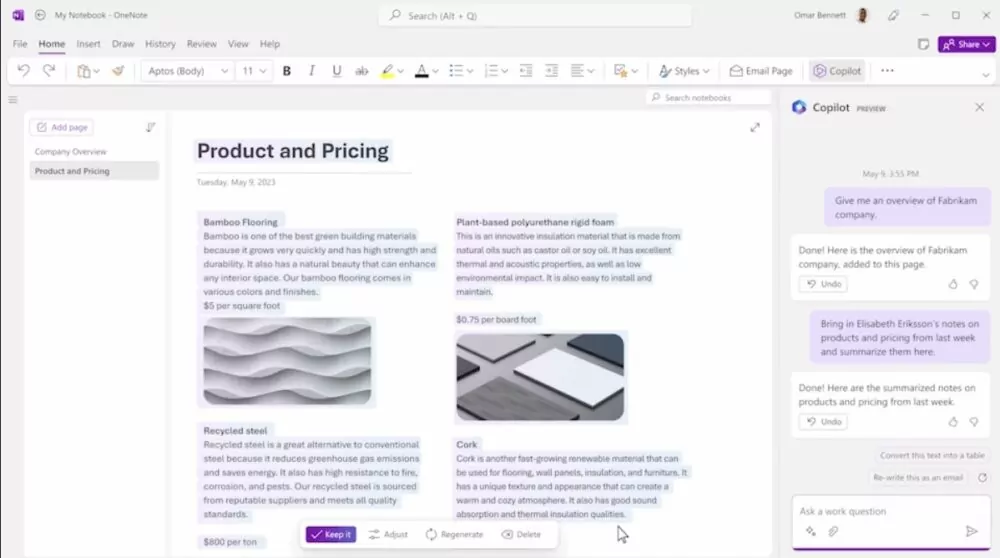
Who can already use Copilot AI?
Starting November 1, Microsoft 365 Copilot is available for business customers with E3 and E5 subscriptions and a minimum investment of 300 licenses, and will be released later for M365 Business Standard and Business Premium customers. Its use costs US$30 per user per month, although larger customers are likely to be able to negotiate a discount.
How does Microsoft 365 Copilot work and what is it used for?
Users can take advantage of Copilot in two main ways. Microsoft Assistant can be accessed directly from within each application – such as creating slideshows in PowerPoint or drafting an email in Outlook. Copilot is also available as a Microsoft 365 Chat chatbot within Microsoft Teams, where it responds to prompts in natural language.
The method of interaction is highly dependent on the application used. In Word, for example, Copilot will suggest improvements to the text, provide a suggestion for a first draft, mark errors, and so on.
Users can ask Copilot to generate a draft in natural language based on specific information sources or a combination of sources. This may include creating a business proposal using notes from OneNote and product plans from another Word document. Once the draft is ready, the text can be edited, the style adjusted, or even an AI tool can be ordered to completely transform the document. Copilot's sidebar serves as a place for further interaction and suggestions for improvements, including adding images.
During a Teams video call, Copilot can summarize the discussion so far, giving participants a quick overview of the topic being discussed. Users can also request from Copilot an insight into the opinions of participants or unanswered questions. If someone can't attend a meeting, they can send an AI assistant there to provide a summary of what they missed and important meeting cues.
In PowerPoint, Copilot can automatically convert a Word document into draft slides, which can then be customized using natural language in the Copilot sidebar. It is also capable of generating speaker note templates to complement the slides and allow the inclusion of additional images.
An alternative way of interaction is possible through Microsoft 365 Chat, which works as a chatbot within Teams. There, the chatbot can serve as a search tool that aggregates information from diverse sources such as documents, calendars, email, and chats. For example, an employee can request an update on project information and receive a summary of relevant group communications and documents with links to original resources.
Microsoft also plans to expand Copilot to additional applications through “plugins,” which means integration with third-party software such as Atlassian, ServiceNow, and Mural. There are currently fifty such plugins available, but we can expect the number to grow to “thousands,” Microsoft announced.
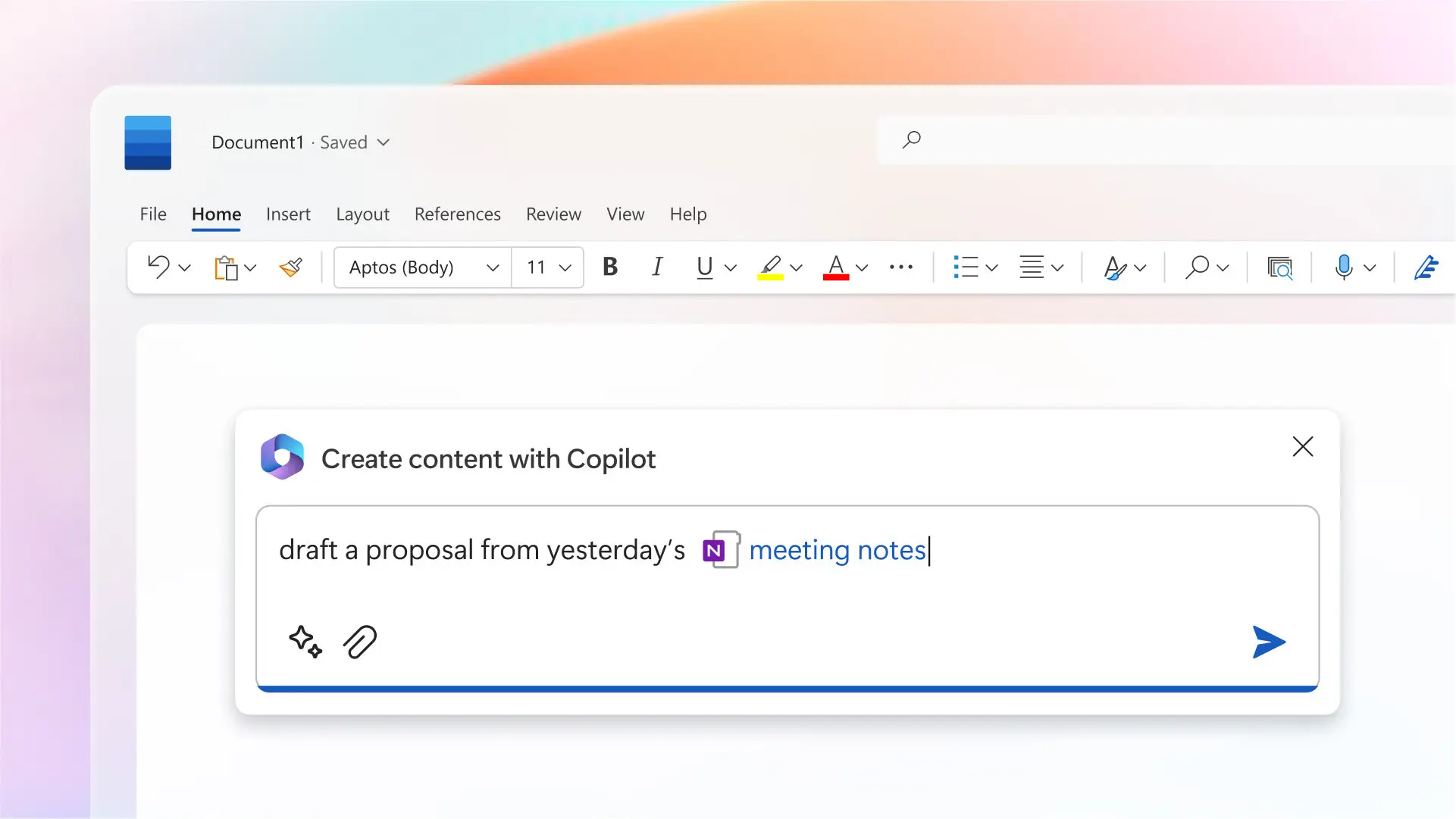

What are the challenges of using the new artificial intelligence Copilot?
Tools like M365 Copilot offer significant benefits, but there are risks that users and businesses should be aware of. One major concern is the tendency of large language models to "hallucinate" or produce false information.
To reduce hallucinations, users should provide more detailed prompts and always exercise caution with AI-provided responses. Microsoft warns that human review and fact-checking are indispensable.
Another risk is Copilot’s ability to search across a company’s Microsoft 365 environment. It can access files based on user permissions, but if sensitive documents aren’t properly labeled or secured, employees could inadvertently access confidential information like payroll or customer data. The challenge is even greater with unstructured data, where sensitive information can be scattered across various documents created by employees. Then there’s the issue of employees storing personal files on work devices—and those personal files could become accessible through tools like Copilot.
Data management is essential, and getting it right is a time-consuming process that involves establishing appropriate permissions across the organization. Many Microsoft 365 users have not yet adequately addressed these risks. As these tools become more widespread, the efficiency of companies' data management will soon be put to the test.






